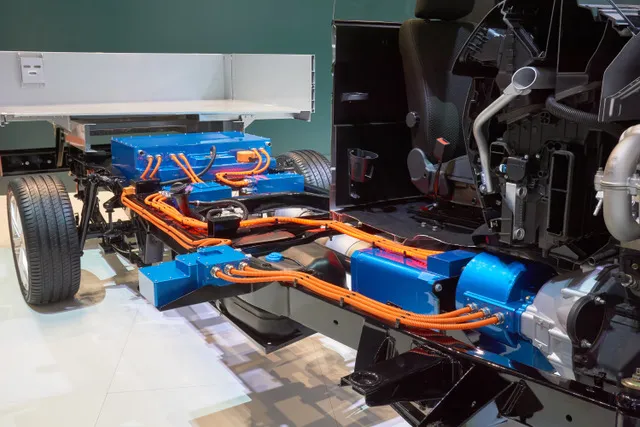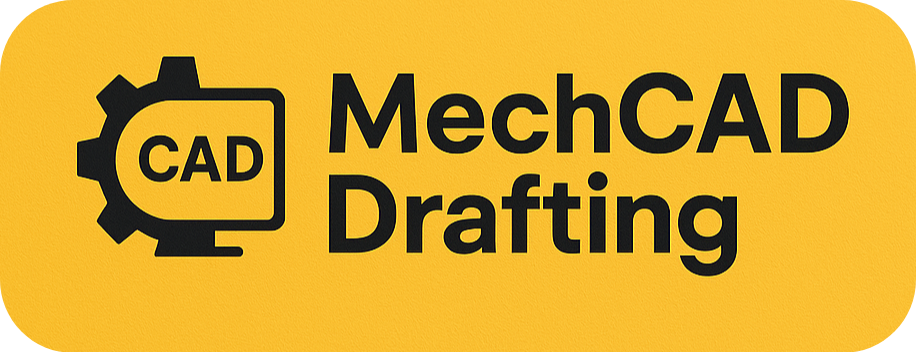End-to-End Mechanical Design Solutions That Drive Success

In today’s fast-paced, technology-driven world, businesses rely heavily on mechanical systems to maintain efficiency, performance, and innovation. As product lifecycles become shorter and customer expectations rise, companies need robust, tailored, and scalable design solutions to stay competitive. That’s where end-to-end mechanical design solutions that drive success come into play.
These comprehensive design services cover everything from initial concept to final production, offering a seamless experience that ensures high-quality outcomes. Whether you’re working in manufacturing, aerospace, automotive, robotics, or medical devices, investing in full-cycle mechanical design can dramatically improve your product quality, time to market, and overall business performance.
What Are End-to-End Mechanical Design Solutions?
End-to-end mechanical design solutions that drive success refer to a full-service approach that encompasses the entire mechanical design process—from idea generation to product delivery. This includes:
- Requirements analysis
- Conceptual and detailed design
- 3D modeling and simulation
- Prototyping and testing
- Design validation
- Manufacturing support
By integrating each of these phases into a cohesive workflow, companies ensure that every aspect of the design meets their performance, durability, and cost targets.
Why a Comprehensive Approach Matters
Businesses that rely on fragmented or siloed design approaches often face delays, miscommunication, and substandard products. In contrast, end-to-end mechanical design solutions that drive success provide a unified process, where every step is aligned with the client’s goals.
This approach offers several advantages:
- Consistency: From early sketches to final assemblies, the design intent remains intact.
- Speed: Streamlined workflows reduce development time and accelerate launch dates.
- Cost-efficiency: Early-stage validation helps avoid costly design errors.
- Scalability: Solutions are built with future growth and upgrades in mind.
- Collaboration: Design and engineering teams work closely, ensuring a shared vision.
In short, comprehensive mechanical design services are not just about engineering—they’re about business success.
Key Phases of End-to-End Mechanical Design
Let’s break down what makes end-to-end mechanical design solutions that drive success so powerful.
1. Discovery & Requirements Gathering
The process starts with a detailed understanding of the project’s purpose, performance goals, technical constraints, and end-user expectations. Engineers collaborate with stakeholders to define clear requirements and objectives.
2. Conceptual Design
Once requirements are in place, designers generate multiple concepts. These initial ideas are evaluated for feasibility, cost, and innovation potential. Early concepts help determine the direction of the final design.
3. 3D Modeling and CAD
Using tools like SolidWorks, CATIA, or Autodesk Inventor, engineers create detailed 3D models that represent every mechanical part and assembly. These models are essential for visualization, simulation, and manufacturing readiness.
4. Simulation and Analysis
Using Finite Element Analysis (FEA), Computational Fluid Dynamics (CFD), and kinematic simulations, designers can evaluate real-world performance before a prototype is built. This predictive power ensures that end-to-end mechanical design solutions that drive success are based on data, not guesswork.
5. Prototyping
Rapid prototyping—using 3D printing, CNC machining, or other fabrication methods—allows physical testing of the design. This step provides valuable insights into form, fit, and function.
6. Testing and Validation
The prototype undergoes rigorous testing for durability, thermal performance, stress resistance, and usability. Any issues are addressed through iterative refinement to meet compliance and safety standards.
7. Production Support
Engineers help prepare the design for large-scale production. This includes creating manufacturing drawings, selecting materials, advising on tooling, and working closely with suppliers to ensure the design transitions smoothly into production.
Industries That Benefit from End-to-End Design Services
End-to-end mechanical design solutions that drive success are not limited to one sector. They’re applicable to a wide range of industries that rely on high-performance mechanical systems.
Aerospace
Precision and reliability are paramount in aerospace applications. End-to-end design ensures that every component meets strict safety and performance standards.
Automotive
The automotive industry is undergoing rapid transformation, especially with electric vehicles. Full-cycle design services help create lightweight, efficient, and innovative vehicle components.
Medical Devices
Medical technologies demand compact, precise, and reliable systems. End-to-end mechanical design supports the development of surgical tools, diagnostic machines, and wearable health devices.
Industrial Equipment
From factory automation to heavy machinery, industrial systems require rugged, optimized designs. End-to-end mechanical design services ensure durability, efficiency, and safety in demanding environments.
Consumer Electronics
Compact designs, thermal management, and user experience are essential in electronics. Integrated design solutions bring products from concept to market faster.
Real-World Example: Redesigning a Robotic Arm
Client Need: A manufacturing company wanted to redesign its robotic arm for better precision and speed.
Solution: The engineering team used end-to-end mechanical design solutions that drive success to develop a new model. The process included:
- Advanced simulations to optimize torque and motion
- Lightweight materials to reduce inertia
- Precision bearings and actuators
- Design for manufacturability analysis
Outcome: The new arm performed 25% faster with improved accuracy and reduced maintenance. The client’s productivity rose significantly.
This example demonstrates how comprehensive mechanical design impacts not just engineering but also business operations.
The Importance of Collaboration
One key element of end-to-end mechanical design solutions that drive success is collaboration. A truly effective design process involves:
- Mechanical engineers
- Electrical engineers
- Industrial designers
- Quality assurance experts
- Manufacturing specialists
Bringing these stakeholders together in a cohesive process ensures that every decision—from material choice to assembly method—supports the overall project goals. It also minimizes risks and improves overall efficiency.
Benefits of Partnering with a Professional Design Firm
Outsourcing to an experienced design firm can add immense value to your business. Here’s why:
- Expertise: Access to a multidisciplinary team with deep knowledge.
- Technology: Use of advanced CAD tools, simulation software, and prototyping equipment.
- Time savings: Reduced development timelines and faster iterations.
- Cost control: Better forecasting and fewer revisions mean lower costs.
- Compliance: Familiarity with industry-specific certifications and safety standards.
When executed by seasoned professionals, end-to-end mechanical design solutions that drive success can transform a good product idea into a high-performing market leader.
Future Trends in Mechanical Design
As technology advances, the mechanical design landscape is evolving rapidly. Here are key trends shaping the future of end-to-end mechanical design solutions that drive success:
Digital Twin Technology
Digital twins replicate physical systems in real-time for monitoring and simulation. They offer insights into how a product performs under different conditions, enabling predictive maintenance and ongoing optimization.
Artificial Intelligence in Design
AI tools are now assisting engineers in generating design alternatives, conducting simulations, and even identifying performance bottlenecks—dramatically speeding up the design cycle.
Additive Manufacturing
Also known as 3D printing, this technology is becoming more relevant in the production of complex geometries and custom parts, especially during the prototyping phase.
Sustainable Design
Environmental concerns are pushing designers to prioritize eco-friendly materials, energy efficiency, and recyclability—making sustainability a vital part of mechanical design strategies.
Modular and Scalable Designs
Products that can be easily upgraded or customized are in high demand. Modular design enables flexibility without complete redesigns, making it easier to serve evolving market needs.
How to Choose the Right Design Partner
If you’re ready to embrace end-to-end mechanical design solutions that drive success, choosing the right partner is essential. Look for:
- A proven track record in your industry
- Strong design portfolio
- Ability to handle the full design lifecycle
- Transparent communication and collaboration
- Familiarity with compliance and regulatory standards
Request case studies or references, and ensure they align with your project vision and goals.
Final Thoughts
The need for speed, quality, and innovation has never been higher. Companies that want to stay ahead must adopt design practices that are complete, integrated, and results-driven.
End-to-end mechanical design solutions that drive success offer a comprehensive framework to turn ideas into reality—efficiently, accurately, and profitably. Whether you’re building a robotic system, launching a new product line, or upgrading existing equipment, these solutions deliver the performance, scalability, and competitive edge you need.
